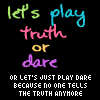So, you're interested in origami and mathematics...perhaps you are a high school or K-8 math teacher, or a math student doing a report on the subject, or maybe you've always been interested in both and never made the connection, or maybe you're just curious. Origami really does have many educational benefits. Whether you are a student, a teacher, or just a casual surfer, I have tried my best to answer your questions, so please read on.
So exactly how do origami and math relate to each other? The connection with geometry is clear and yet multifaceted; a folded model is both a piece of art and a geometric figure. Just unfold it and take a look! You will see a complex geometric pattern, even if the model you folded was a simple one. A beginning geometry student might want to figure out the types of triangles on the paper. What angles can be seen? What shapes? How did those angles and shapes get there? Did you know that you were folding those angles or shapes during the folding itself?
For instance, when you fold the traditional waterbomb base, you have created a crease pattern with eight congruent right triangles. The traditional bird base produces a crease pattern with many more triangles, and every reverse fold (such as the one to create the bird's neck or tail) creates four more! Any basic fold has an associated geometric pattern. Take a squash fold - when you do this fold and look at the crease pattern, you will see that you have bisected an angle, twice! Can you come up with similar relationships between a fold and something you know in geometry? You can get even more ideas from this presentation on Origami: In Creasing Geometry in the Classroom.
On the other hand, if you are a person who likes puzzles, there are a number of great origami challenges that you might enjoy trying to solve. These puzzles involve folding a piece of paper so that certain color patterns arise, or so that a shape of a certain area results. But let's continue on with crease patterns...
Origami, Geometry, and the Kawasaki Theorem
A more advanced geometry student or teacher might want to investigate more in depth relationships between math and origami. You can take a look at these geometry exercises to get you started. For instance, the traditional crane (or another set of diagrams) unfolded provides a crease pattern from which we can learn a lot. Pick a point (vertex) on the crease pattern. How many creases originate at this vertex? Is it possible for a flat origami model to have an odd number of creases coming out of a vertex on it's crease pattern? How about the relationship between mountain and valley folds? Can you have a vertex with only valley folds or only mountain folds?
How about the angles around this point? You can really impress your teacher (or your students) with this...of course, you will need to understand it first! There is a theorem called Kawasaki's Theorem, which says that if the angles surrounding a single vertex in a flat origami crease pattern are a1, a2, a3, ..., a2n, then:
a1 + a3 + a5 + ... + a2n-1 = 180
and
a2 + a4 + a6 + ... + a2n = 180
In other words, if you add up the angle measurements of every other angle around a point, the sum will be 180. Try it and see!
Can you see that this is true, or, even better, can you prove it?
Straight Edge and Compass vs Origami, and Huzita's Axioms
Although there is much to understand about crease patterns, origami itself is the act of folding the paper, which mathematically can be understood in terms of geometric construction. The most well-known construction is "straight edge and compass" construction, which refers to the geometric operations that can be formed with only those two instruments (note that the straight edge is not a ruler with length markings). It is well-known that SE&C constructions can be encompassed (no pun intended) by four basic axioms, first defined by Euclid, over 2000 years ago. It is also well known that there are certain operations that are impossible given just a straight edge and compass. Two such operations are trisecting an angle and doubling a cube (finding the cube root of 2).
But back to origami construction...origami construction is defined as those geometric operations that can be formed by folding a piece of paper, using the raw edges and points of the paper, as well as any subsequent crease lines and points created while folding. What is fascinating is that origami construction, although at first may seem less powerful than SE&C, is actually more powerful, allowing both the trisecting of the angle as well as the doubling of the cube. The mathematician Humiaki Huzita developed six axioms (and later a seventh) based on origami construction. I will not go into the details here, since below are links to a few sites which have very thorough descriptions of Huzita's Axioms:
Huzita's Axioms, courtesy of Wikipedia
Tom Hull's overview of Origami and Geometric Construction, which provides great descriptions and exercises for the 5th and 6th axioms, as well as descriptions of how to trisect the angle and double a cube via folding
Koshiro Hatori's page on Origami Construction describes Huzita's Six Axioms as well as a seventh axiom that Hatori-san discovered!
Christian Lavoie developed an Origami Computational Model for a computational geometry course at McGill University in 2002. As background for this project her provides the axioms of origami along with graphs and equations.
What's especially great about all this is that these axioms are not just theoretical - they have been put into real use! Robert Lang's origami program, ReferenceFinder, uses all seven of the axioms. ReferenceFinder is a program which finds folding sequences to approximately locate any point on a square using a small number of folds.
Origami and Topology
The study of origami and mathematics can be classified as topology, although some feel that it is more closely aligned with combinatorics, or, more specifically, graph theory. I will give an example of an origami theorem which can be seen from both points of view, but first a little about topology.
The connection with topology is less clear than the connection with geometry, probably because most people are far less familiar with this field. If you are a student doing a report on origami and math, you can again impress your teacher by showing that you know what topology is, and how it is related to origami.
So, what is topology? Here's a short and idiosyncratic answer, but you should really read Neil Strickland's thorough answer with pictures. It is important that you understand that geometry and topology are very different. Topology is sometimes called "rubber sheet geometry", meaning that in topology, stretching an object or changing it's shape will not affect it (as long as you do not create any holes or patch up any holes). To a topologist, a coffee cup and a doughnut are the same, while a geometer sees them as completely different.
If you read Neil's answer, you noticed that he mentioned a subway map, which is just a network of points connected by lines, just like an origami crease pattern! Studying origami crease patterns can help us learn about networks such as subways and phone networks, and how to make them faster and more efficient. But don't take my word for it. Thomas Hull, an assistant professor of mathematics at Merrimack College in North Andover, Massachusetts, is the expert in the field of origami and topology. Tom is currently teaching a course in combinatorial geometry, and you can view the course's syllabus and assignments. If you are looking to do more in depth research in this field, your first step should be to contact Tom. His Web site was even mentioned in a story on ABCnews.com!
Now back to the origami theorem that I mentioned earlier, which can be seen from two points of view.
Theorem: Every flat-foldable crease pattern is 2-colorable.
In other words, suppose you have folded an origami model which lies flat. If you completely unfold the model, the crease pattern that you will see has a special property. If you want to color in the regions of your crease pattern with various colors so that no two bordering regions have the same color, you only need two colors. This may remind you of the famous map-maker's problem: what is the fewest number of colors you need to color countries on a map (again, so that two neighboring countries aren't the same color)? This is known as the Four Color Theorem, since the answer is four colors. As an interesting aside, this theorem was proven in 1976 by American mathematicians Appel and Haken using a computer to check the thousands of different cases involved. You can learn more about this proof, if you like.
But back to our theorem. Can you see that you need only two colors to color a crease pattern? Try it yourself! You will see that anything you fold (as long as it lies flat) will need only two colors to color in the regions on its crease pattern.
Here's an easy way to see it: fold something that lies flat. Now color all of the regions facing towards you red and the ones facing the table blue (remember to only color one side of the paper). When you unfold, you will see that you have a proper 2-coloring!
Warning...this section gets even more complicated! A more rigorous proof goes as follows: first show that each vertex in your crease pattern has even degree (the degree is the number of creases coming out of each vertex - we discussed this earlier!). Then you know the crease pattern is an Eulerian graph, that is, a graph containing a path which starts and ends at the same point and travels along every edge (such a path is called an Eulerian cycle). Don't try to prove this unless you are an experienced mathematician! Finally, it is well known that Eulerian graphs are 2-colorable.
Hmmm...I started off by promising a result which can be seen as both combinatorial and topological. Did we get it? Well, the result is clearly combinatorial, since it is graph theory. How is the result a topological one? Well, the 2-coloring gives us an easy way of determining the orientation of each region we color in. All regions colored blue will be facing up (or down) while all regions colored red will be facing the opposite way. Try it! This time, fold a model, unfold it, and color the crease pattern regions with red and blue. Now, refold the model and see for yourself!
by Eric M. Andersen
Tuesday, June 05, 2007
Origami & Math
Subscribe to:
Post Comments (Atom)






0 comments:
Post a Comment